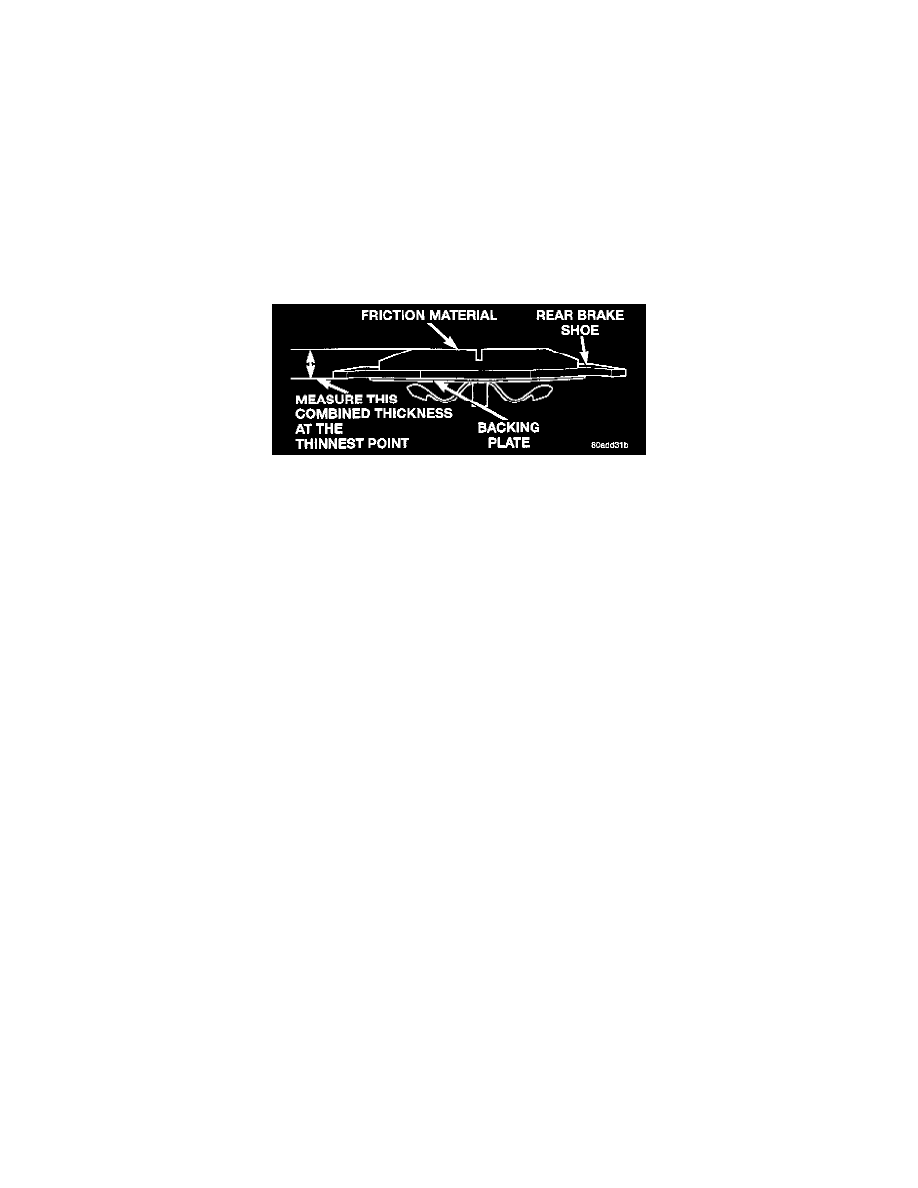Prowler V6-3.5L VIN G (2002)

INSPECTION - DISC BRAKE SHOES (REAR)
CAUTION: The rear disc brake rotors used on this vehicle are made from aluminum. For this reason, only Mopar original equipment manufacturer
(OEM) replacement brake shoes using the OEM friction material are to be used when brake shoe replacement is required. If brake shoes using friction
material other then the OEM friction material are used with the aluminum rotors, severe scoring of the rotor braking surfaces will occur. If the braking
surfaces of the rotor become scored replacement of the rotor will be required. The rear disc brake rotor used on this vehicle cannot be machined.
On the vehicle, visually inspect brake shoes (pads) for uneven lining wear. Also inspect for excessive lining deterioration. Check for insufficient
clearance between the wear indicators on the shoes (if equipped) and the brake rotor.
If a visual inspection does not adequately determine the condition of lining (friction material) on the rear brake shoes, a physical inspection will be
necessary. This will require that the brake shoes be removed.
The combined thickness of the brake shoe backing plate and the friction material is to be measured at the thinnest point of the combined thickness.
Brake Shoe Thickness Measurement
The combined minimum thickness of the rear brake shoe backing plate and friction material is 7.0 mm (9/32 inch). When the combined thickness
reaches the minimum thickness specified, the rear brake shoes must be replaced.
NOTE: When the brake shoes are replaced, only brake shoes meeting the Original Equipment Manufacturer (OEM) material formulation should be
used. This is required to maintain the original braking performance of this vehicle. See Caution at beginning of Inspection.
Replace both disc brake shoes (inboard and outboard) on each rear caliper. It is necessary to replace the shoes on the opposite side of the vehicle as
well as the side failing inspection.
If the brake shoes do not require replacement, install the original brake shoes back in the caliper. Make sure each brake shoe is returned to its original
position, on the same side of the vehicle it was removed from.
